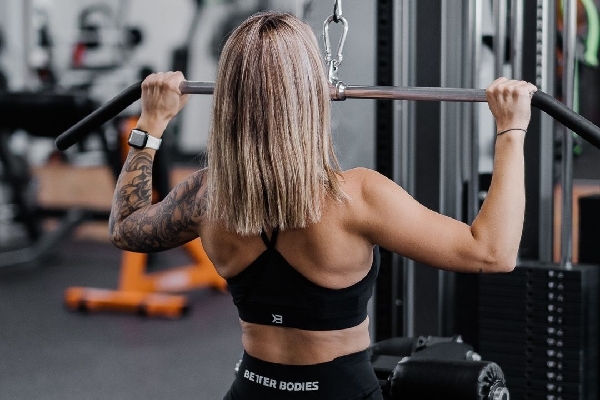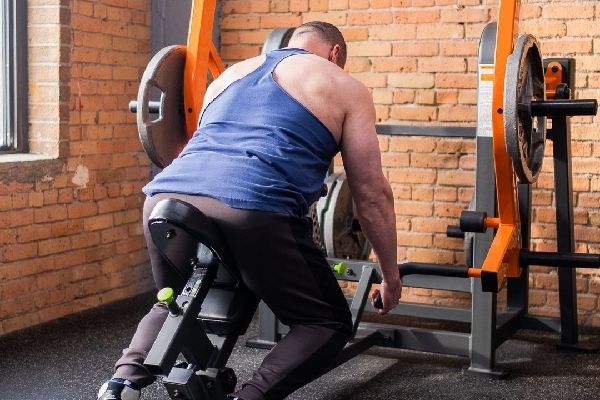4 Strategies for the Incorporation of Unilateral Movements
We’re here today to learn about unilateral movements. Training is a gift that we get to include in our everyday lives as a means to a better quality of life. There are many different ways to go about your workouts and how you proceed while in the gym will always be unique to you. The types of exercises you choose, the sets and reps schemes that you follow, the sequencing of your movements and the biomechanical planes of motions you utilize all fit into how you incorporate training into your life.
There will come a time when things begin to feel stale, your return on effort isn’t quite what it used to be, you have nagging or significant injuries that you feel are holding you back or you just plain want something else to do.
These scenarios are all very common and if you are experiencing any of them, perhaps it is time for you to include Unilateral Movements into your plan and here are four great strategies when doing so.
Strategy #1: Lost Mind-Muscle Connection
When you’ve been training for a long time or even when you’re just starting out, sometimes you end up losing that all-important connection with the target muscle you’re training. This can happen for any number of reasons but typically speaking, one of them is because the alternate side or other half of your body is taking up most of the stress and you’re able to connect with that side a little better.
Most times this is because your dominant side takes over so if this is the case, using unilateral movements is a great option to fix this issue. Give the barbells a break and work with the dumbbells focusing on the side you’ve lost that connection with first and then finish with the dominant side.
Work on machines that offer that unilateral movement option and again, take the same approach. The goal should be to take your time and ensure both sides of your body feel the same while being triggered by the training stimulus.
Strategy #2: Nagging or Significant Injuries
If you haven’t experienced an injury yet that has either held you back or put you out of the gym altogether, then consider yourself lucky. For the most part, everyone has had some sort of discomfort while training which has limited them in their ability to really train as hard as they want.
In these cases, unilateral training is a huge help because of the contra-lateral benefit that this style of training offers. Even if you can’t use one whole side of your body, for say a reason such as a biceps tear or knee injury or anything of that sort, then by training the non-injured side just as hard as you normally would send signals to the damaged side to stimulate enough of a response to at the very least maintain the muscle that you have.
The benefit of this is of course not having to start all over again once the injury has healed so if you’ve found yourself in this predicament, get to the gym and train your good side.
Strategy #3: New Type of Training Stimulus
While we train and while we put together our plans, the goal is to always stimulate the muscle with something new and fresh so that we can experience the benefits that come along with weight training. Building strength and muscle is the focus and due to our body being extremely adaptive, we need to switch things up from time to time to keep it guessing and growing.
If you’ve always just focused on bilateral movements, then there’s no better place to start for continued gains than incorporating unilateral movements. You may find that by focusing on one side and then the other, you can actually complete more work within each set and that will always be a good thing.
Be sure you get comfortable with stability before you go all out here, which you will find will also improve by using unilateral movements, and work angles you previously couldn’t by being restricted within most of the regular movement patterns you were using.
Strategy #4: To Increase Energy Output In Unilateral Movements
If you are currently working on losing body fat or simply want to maintain the low level you possess already and don’t really want to increase your cardio or decrease your food, give unilateral training a try. Think about it like this; to complete one set for each unilateral exercise you perform, you actually have to complete two sets. That’s twice the amount of work, twice the amount of energy and twice the amount of calories you will burn to finish the set.
So, if say for example, your regular chest day includes around 20 sets, then doing the same workout with unilateral movements puts you up to 40 sets in total to complete the same workout. This can certainly be very advantageous to you depending upon how you incorporate its use, but it will significantly impact your overall calorie expenditure for the day which you can use to your advantage.
As mentioned earlier, how you train will always be unique to you and by simply including unilateral movements into your programs for any of the above-mentioned reasons, will certainly separate you from others. Try using unilateral movements with your weaker body parts to help bring them up and then use them during your stronger workouts to jack up the pump and intensity.
However, you decide to incorporate it you will benefit from doing so. Here at Brickhouse Gym, we have everything you need to give this a try and if you’re still uncertain about how to proceed, mention this article, ask one of our trainers for help and see the benefit of unilateral movements for yourself.
Author: Dana Bushell
Gym Star Team Member





